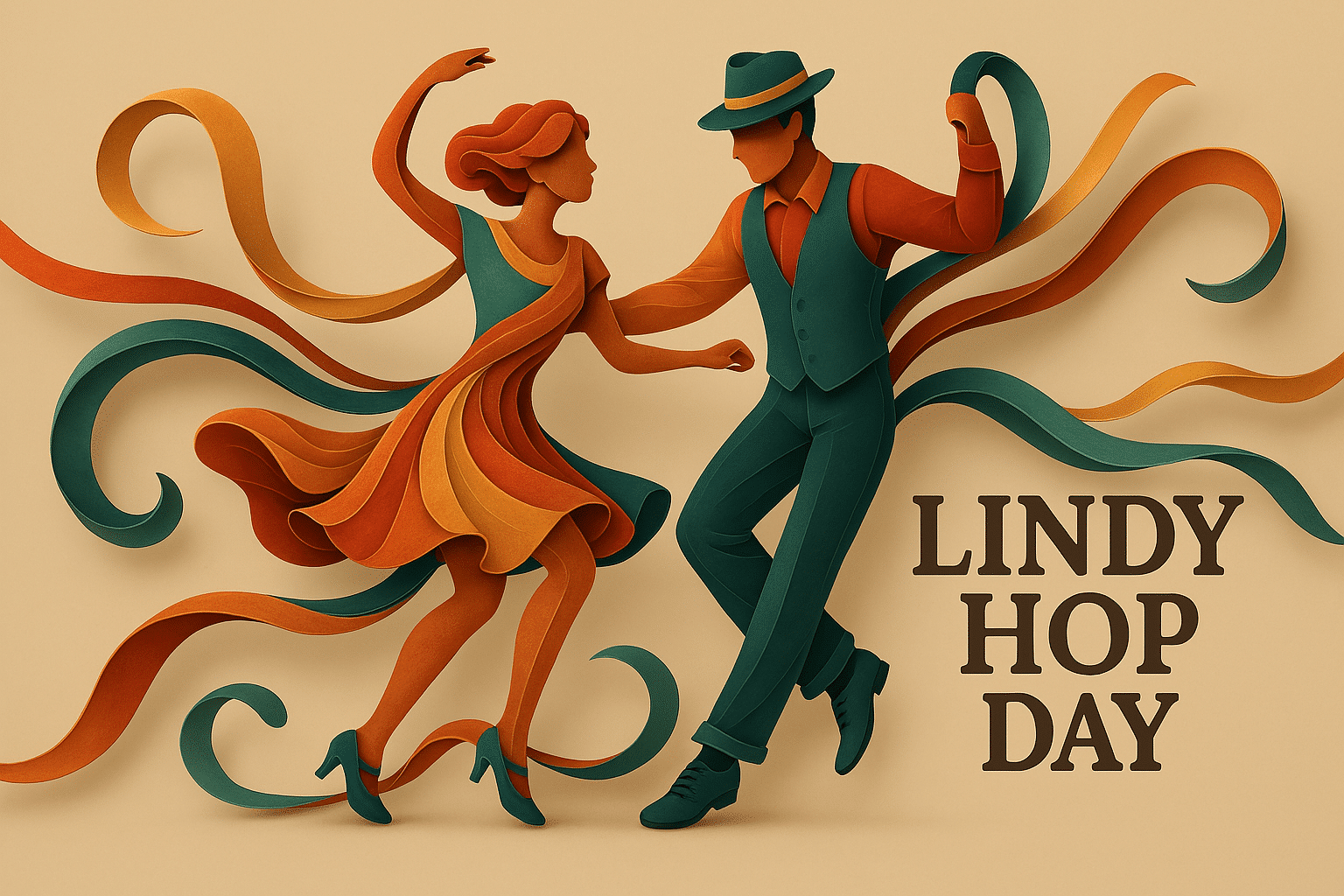What is World Lindy Hop Day?
World Lindy Hop Day is celebrated each year on May 26. This day honours the lively and energetic dance known as the Lindy Hop, born in Harlem, New York City, in the late 1920s and 1930s. The Lindy Hop combines jazz, swing, tap, and Charleston elements, creating a joyful dance full of improvisation and rhythm.
The Lindy Hop became popular during the swing era, celebrated for its energy and creativity. This day highlights the cultural impact, history, and ongoing popularity of the Lindy Hop worldwide.
History and Origin
World Lindy Hop Day started in 2014 to honour the 100th birthday of Frankie Manning, a legendary dancer who significantly shaped the Lindy Hop. Manning was born on May 26, 1914, and is widely seen as a pioneer and ambassador of the dance. His charismatic performances and innovative choreography brought international recognition to Lindy Hop.
The name “Lindy Hop” is said to have come from aviator Charles Lindbergh’s famous solo flight across the Atlantic Ocean in 1927. After dancer “Shorty” George Snowden demonstrated innovative steps during a dance marathon, the name stuck and became iconic. World Lindy Hop Day honours this rich heritage and its lasting influence.
Who Participates in World Lindy Hop Day?
- Dancers: Join in social dances, workshops, or performances to celebrate Lindy Hop.
- Swing dance groups: Organise events to teach and showcase this historic dance.
- Musicians: Perform jazz and swing music to accompany Lindy Hop events and celebrations.
- Dance historians and teachers: Offer workshops and talks about the history and culture behind Lindy Hop.
- Cultural and community organisations: Support events highlighting the social impact and legacy of the dance.
Slogans and Themes
Common slogans for World Lindy Hop Day include “Keep Swingin’,” “Celebrate Lindy,” and “Dance with Joy.” Themes often centre around the dance’s inclusive spirit, historical significance, and its joyful, community-building nature. The day emphasises the celebration of cultural heritage through dance and music.
Colors symbols and patterns
Colors
- Black and white: Classic swing-era style and elegance.
- Red: Represents the energy and passion of Lindy Hop dancers.
- Gold: Symbolises timeless quality and celebration.
Symbols
- Dancing couples: Represent the joy and social nature of Lindy Hop.
- Music notes: Highlight the dance’s deep connection to jazz music.
- Swing-era hats and shoes: Reflect the fashion and style of the 1930s.
Patterns
- Polka dots: Fashion trend popular during the swing era.
- Stripes: Reflect rhythm, movement, and dance energy.
- Checkered designs: Evoke classic dance floors from the original era.
Most Used Hashtags
- #WorldLindyHopDay
- #LindyHop
- #SwingDance
- #FrankieManning
- #KeepSwinging
How to Celebrate World Lindy Hop Day:
- Attend a dance event: Join local Lindy Hop workshops or social dances.
- Learn Lindy Hop: Take a beginner’s class or try new steps if you’re experienced.
- Listen to jazz and swing music: Explore the music that made Lindy Hop famous.
- Share your moves online: Post dance videos or stories using official hashtags.
- Teach others: Host an informal gathering to share and practice Lindy Hop moves with friends.
Why is World Lindy Hop Day Important?
World Lindy Hop Day is significant because it celebrates a dance form that shaped cultural history. Lindy Hop was groundbreaking, creating spaces of racial integration and inclusivity during a time of segregation, especially in places like Harlem’s famous Savoy Ballroom.
The dance fosters community, creativity, and joy, values still vital today. By celebrating World Lindy Hop Day, we keep the rich legacy of Frankie Manning and countless other dancers alive, ensuring new generations can appreciate the power and beauty of this vibrant dance.
Features
- Arts Literature and Music
